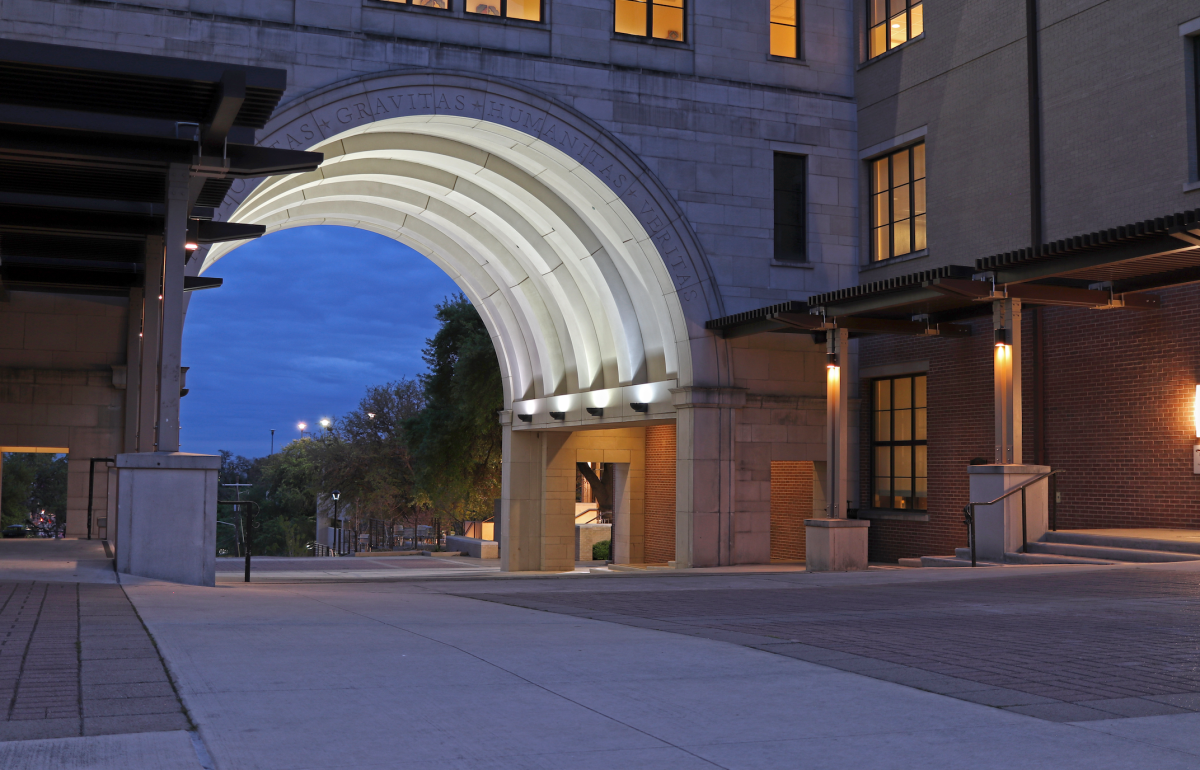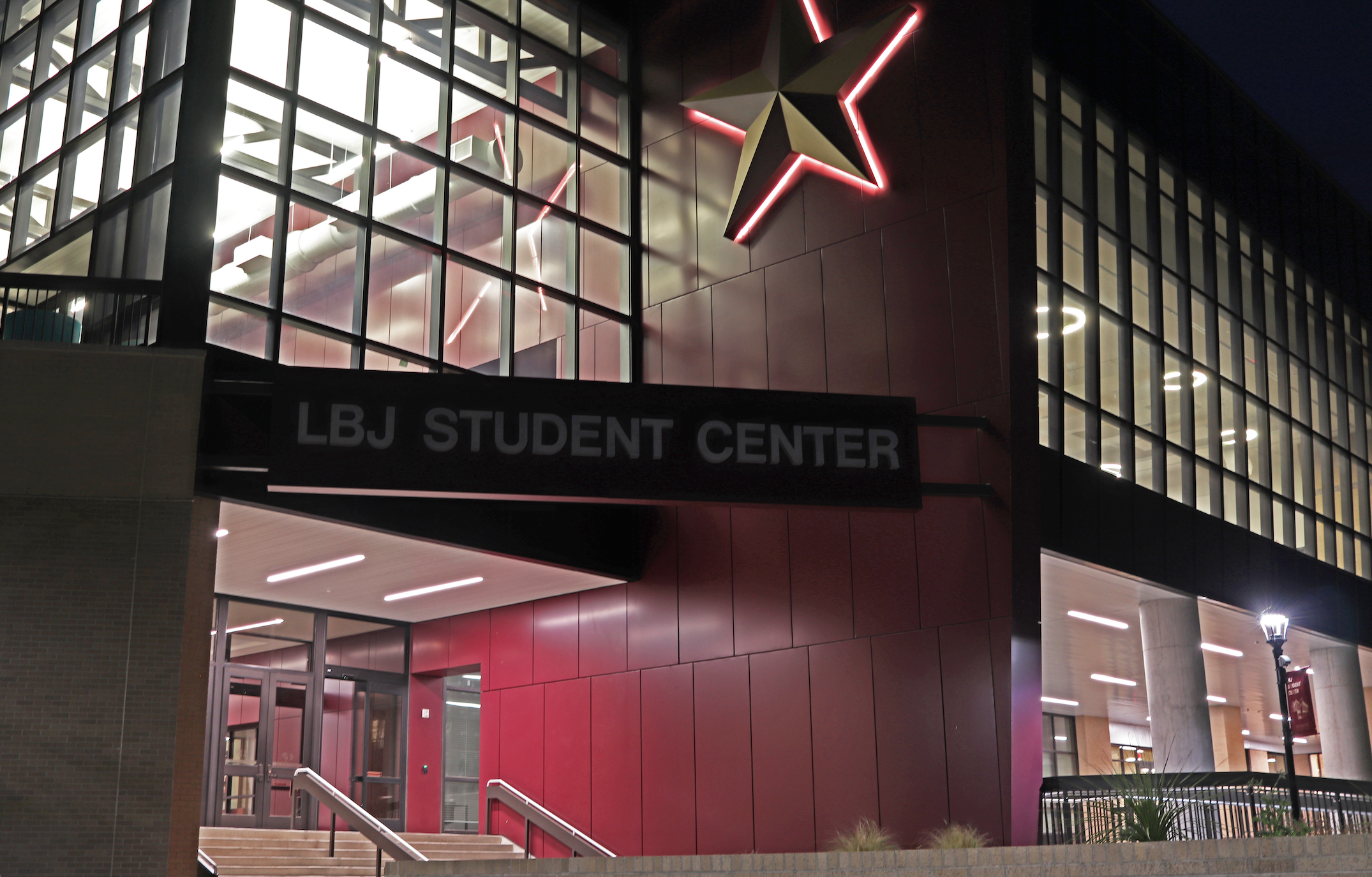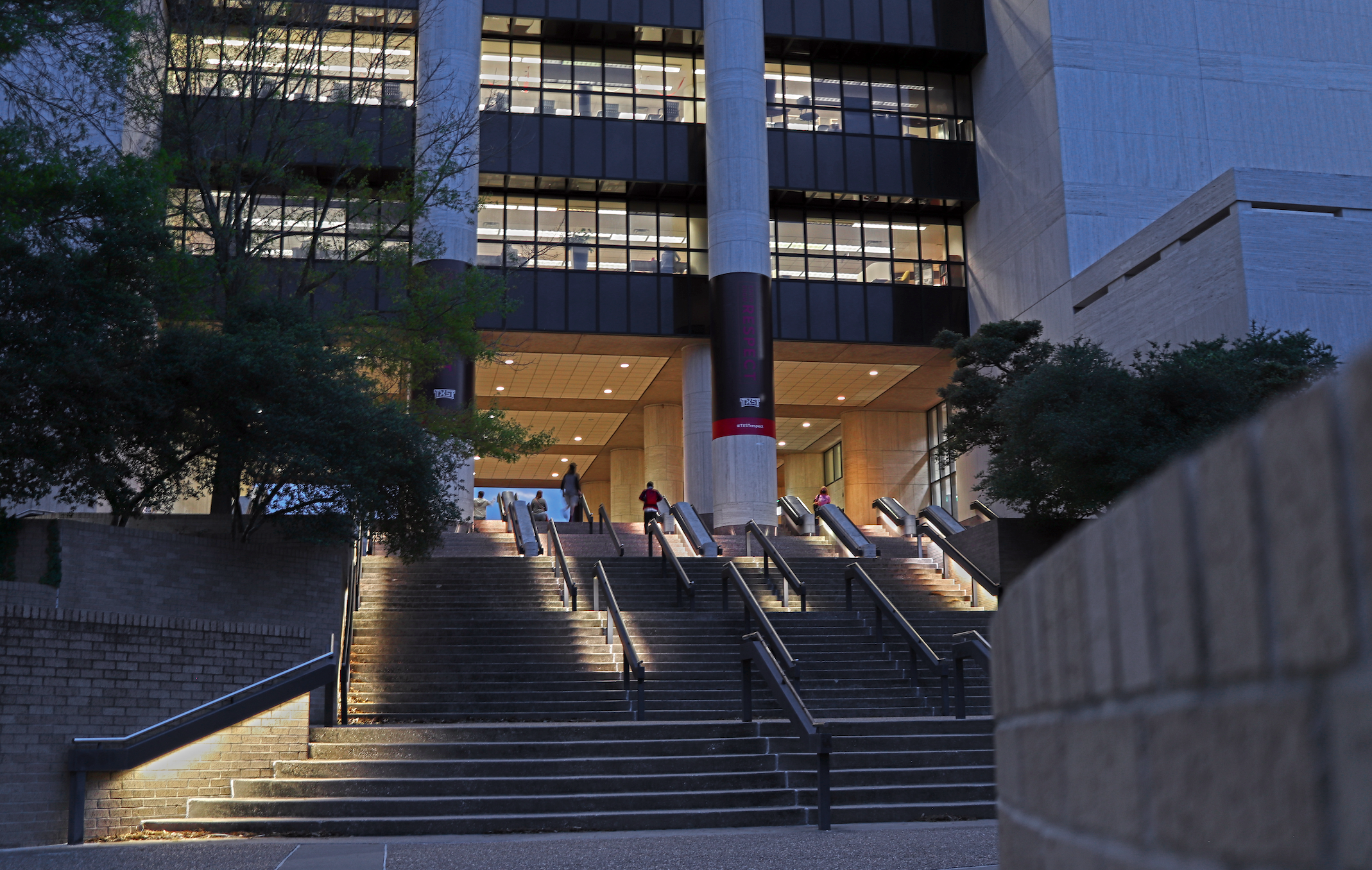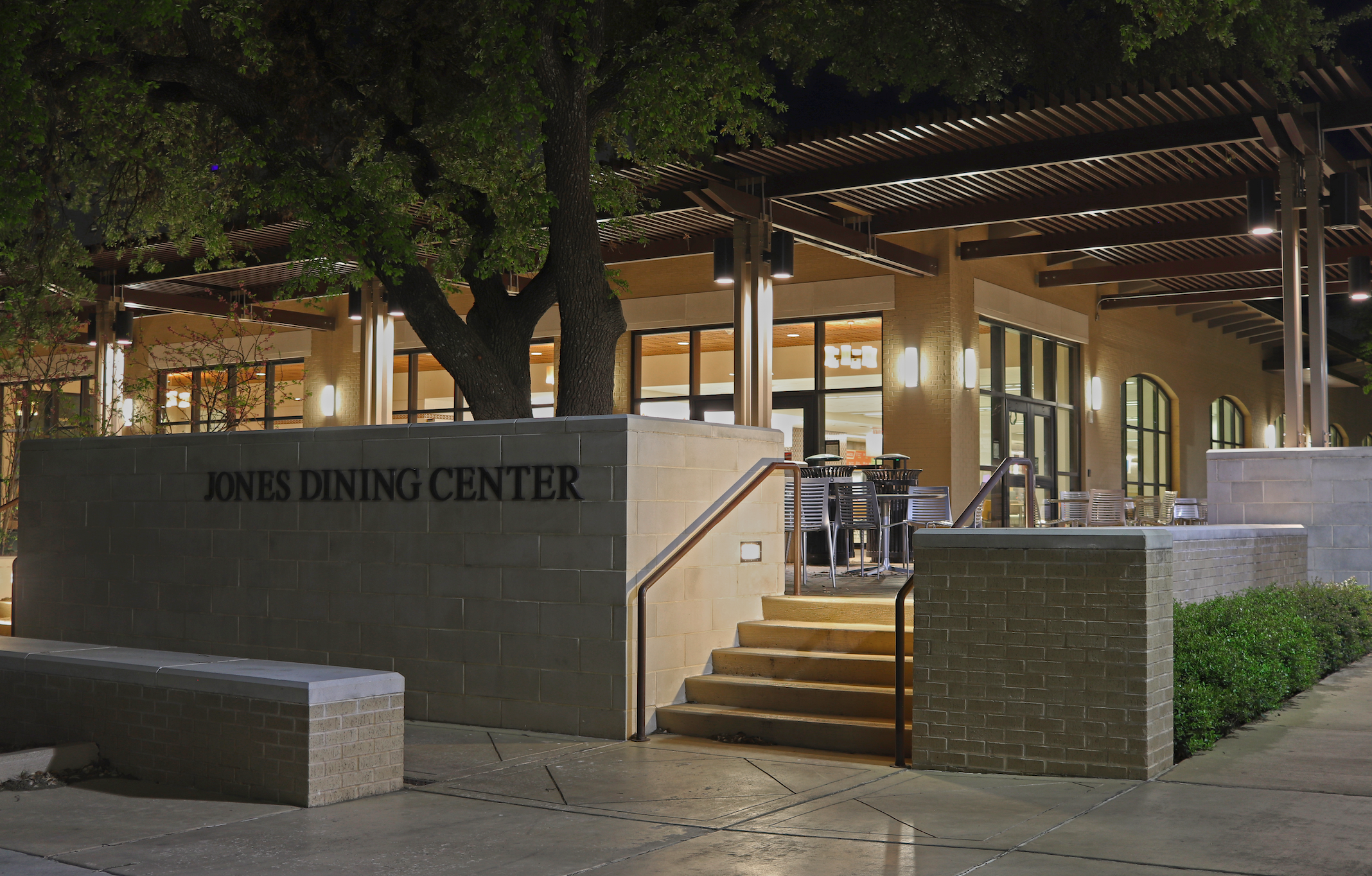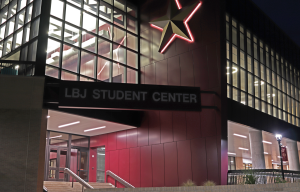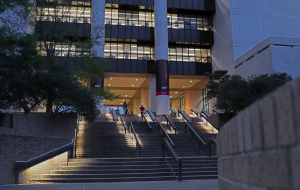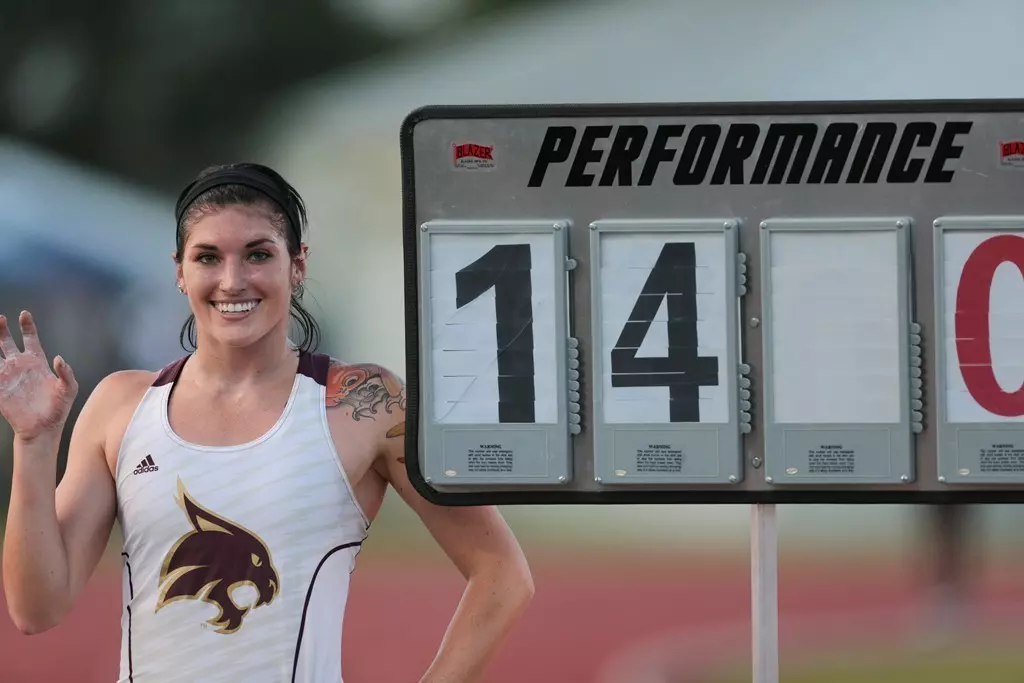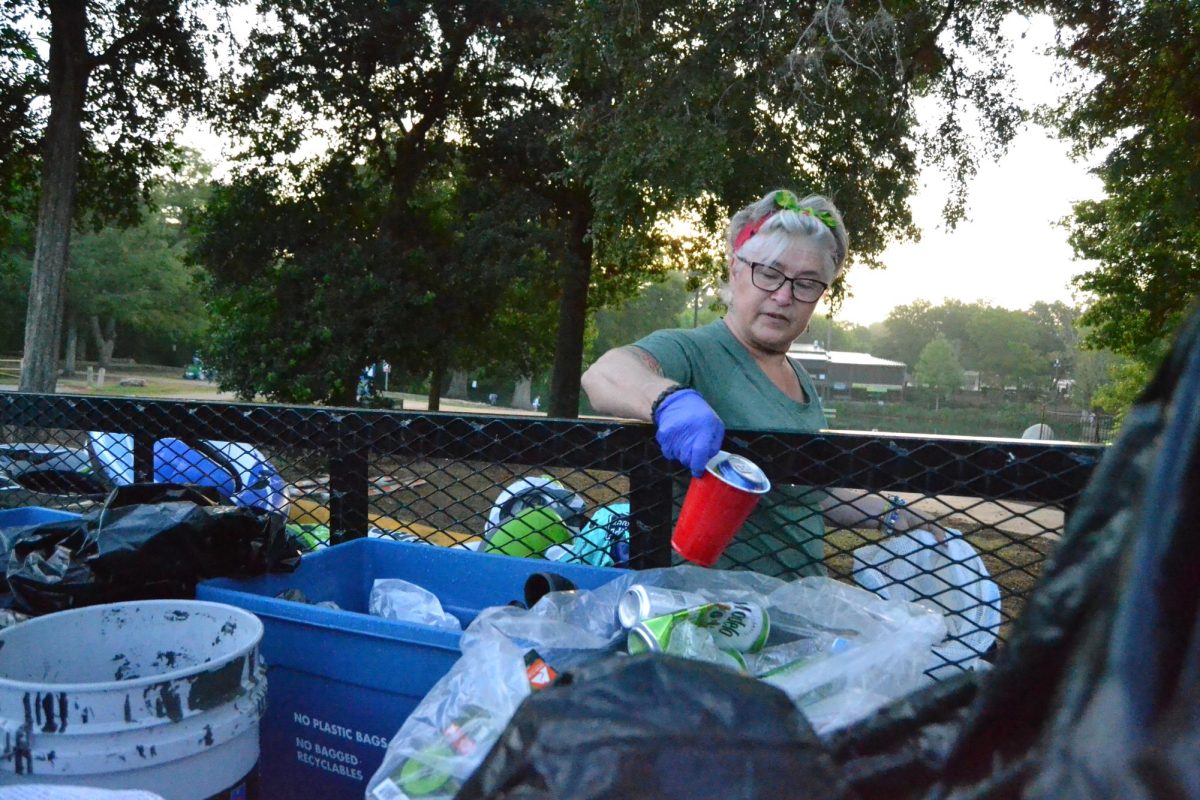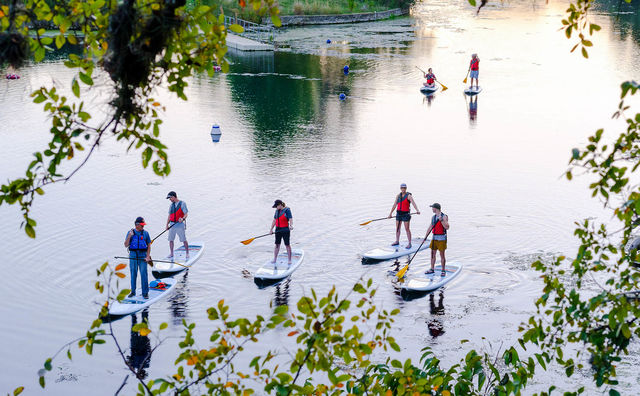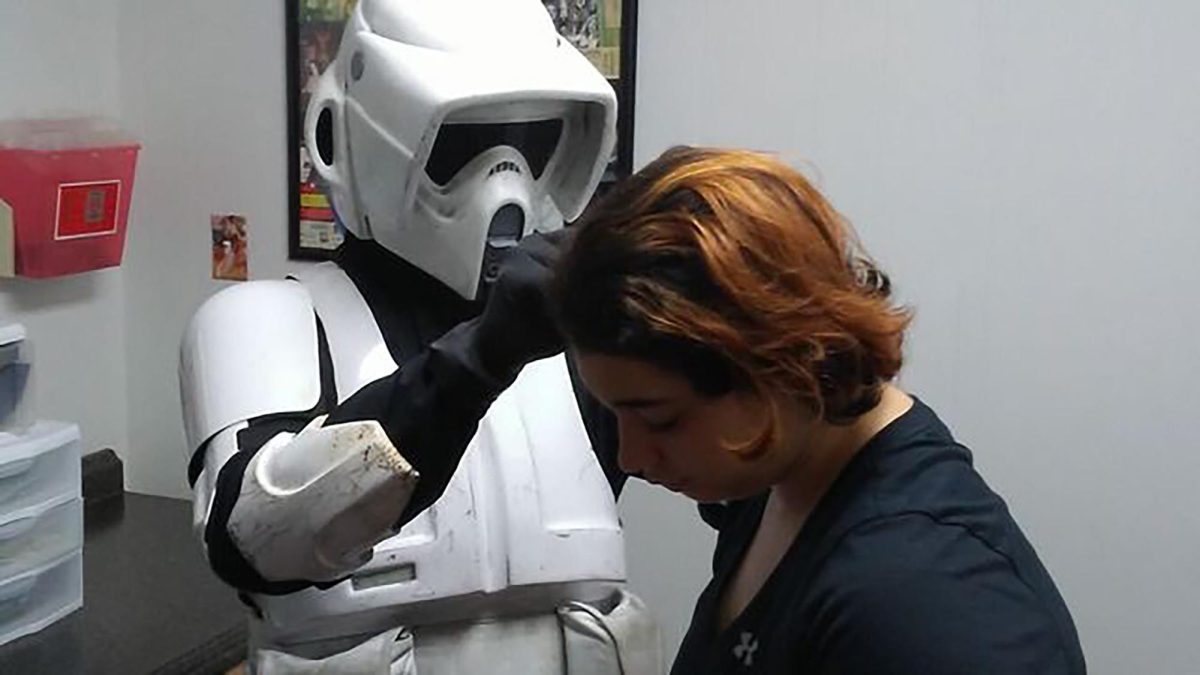At the end of a long school day, after whiteboards are wiped clean and students return home, Texas State’s buildings continue to stay bright overnight. While campus walkways stay lit during all hours of the day, it comes at a higher price than one might think.
Electricity puts a 5% dent in the university’s annual operating budget. It costs the university nearly $7 million dollars annually to keep buildings running 24/7. However, with campus constantly buzzing with activity, Texas State’s Chief Financial Officer Eric Algoe sees no time for making the switch from power to total darkness.
“Altogether, there is still quite a bit of activity in many of our buildings overnight,” Algoe says. “We also do most of our custodial work and some maintenance work during the overnight hours to stay out of the daytime rush in buildings.”
Electricity on campus also powers Texas State’s heating and cooling which, due to the age and sizeable square footage of many campus buildings, must stay on even at night. Algoe says heating and cooling each building takes an exorbitant amount of time, meaning if the temperature swing is too great, the university runs multiple risks.
“If we were to let buildings heat up or cool down in those overnight hours too much, we would not be able to get them back to comfort in time to reopen,” Algoe says. “Furthermore, large temperature swings inside buildings runs the danger of humidity condensation creating flood-like conditions.”
Jim Vollrath, Texas State’s director of Utilities Operations, manages the production of these 24-hour heating and cooling systems within buildings through a number of power plants across campus. These systems reach each building through pipes that run beneath the floors of the university.
“Steam is used in the buildings and then converted to heat with large furnaces; they’re massive,” Vollrath says. “Then we make chilled water. We distribute it under the buildings at 45 degrees, and they use that instead of refrigerants in the buildings’ A/C systems.”
Texas State’s Star Park, containing research wet labs, which are research labs used for handling chemicals, liquids or gaseous substances, ranks as one of the highest energy consumers due to its HVAC (heating, ventilation and air-conditioning) systems designed for those purposes.
Some of the largest buildings on campus like Alkek Library, the LBJ Student Center and the Student Recreation Center also top the energy consumption list due to their abundance of square footage.
When the pandemic hit, the cost to heat and cool these large buildings shot up dramatically. Utilities Operations placed a strong emphasis on student and staff safety. With early scientific theories warning the virus could be contracted by airborne spread, Vollrath’s department prioritized allowing fresh air into the buildings, regardless of cost.
“It takes more energy to air condition or heat outdoor air than it does to circulate air,” Vollrath says. “Because safety is our first priority, last year we made a decision to sacrifice energy.”
Despite this, Vollrath and the Energy Conservation Committee typically push to lessen energy expenditure on campus. Valeria Vargas, a psychology sophomore, serves as the committee’s senator at large and works with her team of fellow students to pass legislation that promotes safe, cost-efficient and reliable energy.
“We just passed a piece of legislation to try and help, if the snowstorm were to happen again, to allow students on-campus to keep their electricity,” Vargas says.
Because Texas State purchases energy from the City of San Marcos, when Winter Storm Uri made its way through the city, students experienced darkened buildings after the city’s energy dealer rationed energy to special zones like hospitals and sanitary districts, not including the university at large.
“Texas State used to generate a portion of the electricity on campus,” Vollrath says. “We’ve talked and done studies to determine if it would be more cost-efficient or reliable [to generate our own] than getting it from the city, but it could be cost-prohibitive to switch over. Not saying it is, but it is difficult to forecast.”
Texas’ energy costs are low already, set at 8.6 cents per kWh (compared to 14.3 and 16.9 cents in New York and California). The state also pushes local organizations to lessen their yearly electrical costs, motivating Algoe to make energy-sustaining choices for the campus.
“Various Texas laws and government codes require us to pursue reductions in our energy cost per square foot every year,” Algoe says. “This pursuit of increased energy efficiency is a constant driver in our decision-making around utility operations.”
Beyond finances, saving energy, as Vargas believes, is simply the right thing to do. Alongside her team of fellow students, Vargas works to brainstorm methods of energy preservation both on campus and in her home, such as keeping her room lights off when not in use, hand washing her dishes and changing the thermostat sparingly.
“My restroom and my closet lights have been off for a while now, but it’s fine,” Vargas says. “I’ve been telling my roommates, ‘Use the light from your room to light your restroom to save energy.’”
On campus, Vargas hopes to push students and departments across campus toward energy preservation in their classrooms, noting more than half (54%) of the university budget comes from student tuition and fees.
To reduce that number, Vollrath and Vargas rely on on-campus departments to hold themselves accountable for their individual energy consumption, knowing the first step toward lowering the $7 million dollar spending begins with a few thoughtful clicks of a light switch.
“It’s a big university that wastes a lot of electricity, ” Vargas says. “I think it’s important to keep in mind just to save energy, water and everything.”
The University Star has pending open records requests for Texas State’s utility bills dating back to the 2018-19 school year.











